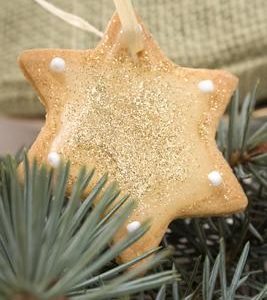Aging & Caregiving in the News

Information, updates and interesting tidbits
In this issue:
- Time goes by faster as we grow older
- Family caregivers during COVID-19
- Is edible glitter safe to eat?
Why Does Time Seem to Fly in Our Older Years?
“The holidays are here already? Seems like we just took down the Christmas tree last week!” Time seems to pass faster as we grow older. Why is that? Scientists continue to unravel the mysteries of the perception of time—and older brains are offering some clues. Duke University School of Medicine professor Adrian Bejan says this phenomenon has to do with the way our brains process images. “People are often amazed at how much they remember from days that seemed to last forever in their youth,” said Bejan. “It’s not that their experiences were much deeper or more meaningful, it’s just that they were being processed in rapid fire. Days seemed to last longer in your youth because the young mind receives more images during one day than the same mind in old age.”
This isn’t necessarily due to any deterioration in older brains; instead, says Bejan, our brains become more complex with age, which is why it takes longer for images to process. You can read more about Bejan’s research here.
Family Caregivers Reminded to Plan for their Own Care
We hear so much about the stress faced by parents of young children during the COVID-19 pandemic. A recent study found that family members who are providing care for older loved ones also are facing challenges at this time. The October 2020 poll from The Associated Press-NORC Center for Public Affairs Research (AP-NORC) showed that on average, these family members are providing 36% more care than before the pandemic as they try to keep their senior loved ones safe.
One striking finding is that family caregivers aren’t any more likely to plan for their own care than they were before! Granted, family caregivers may be so busy with their caregiving, work and other family responsibilities that these discussions drop to the bottom of their to-do list. But at this time, it’s more important than ever for younger people to think about and talk about healthcare choices, living preferences, end-of-life wishes and financial issues.
 FDA: All That Glitters Isn’t Edible
FDA: All That Glitters Isn’t Edible
Sparkly cupcakes, cookies and doughnuts have been all the rage these days, and we’re likely to see some pretty, shimmery treats over the holidays. But the U.S. Food and Drug Administration (FDA) reminds us that not all baking glitters are meant for consumption. “Companies that make edible glitters and dusts are required by law to include a list of ingredients on the label,” the FDA reports. “Common ingredients in edible glitter or dust include sugar, acacia (gum arabic), maltodextrin, cornstarch, and color additives specifically approved for food use, including mica-based pearlescent pigments and FD&C colors such as FD&C Blue No. 1.”
Is the glitter you bought online or at a craft store safe to eat? The FDA says the product label should say “edible.” “Non-toxic” does not mean edible. If the label doesn’t have a list of ingredients, that’s another indicator that you shouldn’t use the product directly on food. So admire the sparkle, but check the label first! Read the entire FDA statement here.
Source: IlluminAge Communication Partners; copyright 2020 IlluminAge
![Grace Barker Health [logo]](https://www.gracebarkerhealth.com/wp-content/themes/gracebarker-2017/images/logo.png)




